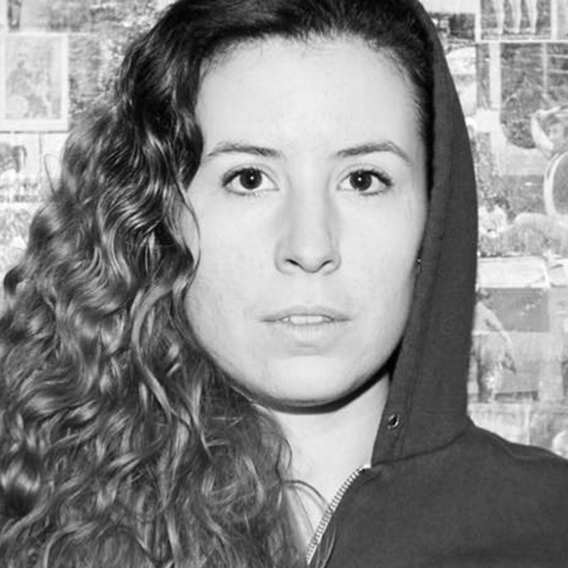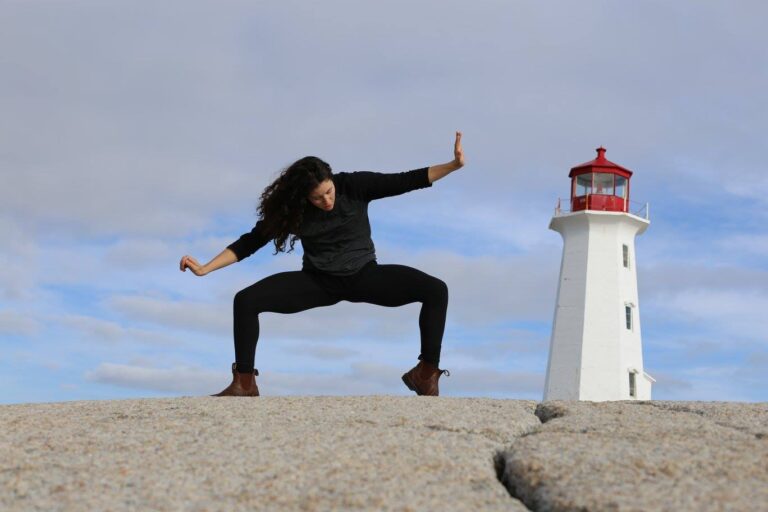MS Won’t Stop Me From Dancing
I have always been ambitious. From a young age, I pursued every new adventure, every twist and turn in my career, with a full heart. When I made up my mind to do something, I barrelled forward. I prided myself on being physically strong, overly eager, and passionately driven in my work.
And then, in April, I was diagnosed with multiple sclerosis.
At the time, I didn’t know much about MS. But I did know it was something a dancer and choreographer like me shouldn’t have.
Devastated, I confided in my family and close friends, but uncharacteristically held back from broadcasting it too loudly. I told my employers on a need-to-know basis, trying to explain why I was giving shifts away and cancelling engagements last-minute. I asked everyone around me to keep the news quiet until I was ready to talk about it openly, unsure if I would ever be ready. Authenticity and transparency had always been of utmost importance to me, but I was struggling to honour those values. I was scared of what others might think and found myself suddenly uncertain about what the future held.
I learned that MS as a degenerative disease can take your physical and mental abilities away from you, and the gravity of my diagnosis became evident. My girlfriend, family, and friends all saw this too. They looked at me with a deep sadness and said, in a supportive way, “No one needs to know.” “This can be private, keep it off Facebook.” “You’ll be fine, but it’s better if you lay low.”
Fear-based reactions from those who loved me most and wanted to keep me safe. And I agreed with them. Who was going to hire a choreographer who couldn’t move her right foot?

Patricia dancing, pre-MS, with James Everett for Hub14’s IMissYou. Photo by Dahlia Katz.
So, I kept the news to myself. I went to my doctors’ appointments, worked my joe jobs when I could, continued teaching dance to the best of my ability, and stayed quiet. I was ashamed of my new body and the version of myself that lived within the MS diagnosis.
From the outside, I appeared to be the same old me. If you already didn’t know I had MS, you never would have been able to tell. I posted vacation photos on social media that showed me and my girlfriend smiling all over Europe, but kept the shuffling I did in between locations undocumented. My love and I got engaged and celebrated to the joy of everyone around us, though most of them didn’t know that a diagnosis had brought us closer together and made our love stronger. I performed in a dance festival as an understudy in a piece I choreographed and played it off as easy breezy, even though I heavily altered the choreography to eliminate any movements I couldn’t pull off. I was vocal about my excitement at starting grad school in dance, but I was dreading having to explain to the faculty of York why one of their newest MFA students couldn’t walk quite right.
I had no idea how to move forward, how to continue a career in dance. I still wanted to create and perform, but it was unfathomable. I lost myself to the shame and fear of MS. I had a body that was no longer strong, a spirit that couldn’t be eager, a drive that had no sense of direction. I was confused by the influx of treatment information. I didn’t know how to help myself or what others could do for me. It was the lowest I had ever been.
And then, in the strange way that life unfolds, one morning in July I had a realization. MS wasn’t something I could get rid of. It sucked and it was scary and it was hard, but it was non-optional. There was no going back from my diagnosis. But it wasn’t MS that was stopping me from continuing to pursue my dreams. It was shame. And shame was something I could let go of.
The first step was to own my diagnosis, which I decided to do in a Facebook post. I formed my arguments as to why going public was important to me, bracing myself for pushback from my friends and family. They had been so frightened by my diagnosis and my recent state of being that I needed to show them the old me was back and I wasn’t going to take no for an answer. But then a funny thing happened. Seeing me return to someone resembling my older self, everyone was encouraging. While they wanted to protect me, they did not want me to feel any shame. So, in July, I posted publicly about having MS. That action may seem trivial or small to some people (Facebook is just Facebook), but, for me, it was the first step in owning who I now was.

Patricia (centre) and Cue6’s pool (no water) cast rehearsing.
Pre-diagnosis—“before sclerosis,” as my fiancée and I have come to call it—I walked into every rehearsal hall preaching inclusivity. I work primarily in theatre and teach classes for non-dancers, and I always gave a speech about “working to the best of your ability” and “creating movement from within the facility you have.” I coached people into accepting the limitations of their body and encouraged them to challenge themselves within it.
But now, post-sclerosis, I was struggling with accepting my own body and my own limitations. I honestly didn’t know if I could still make a career as a choreographer or performer, but I was resolved to carve out something that moved in that direction. I had to embrace my own teaching and coaching, or walk away from dance forever.
Over the summer, I was given the opportunity to work on a show and test the waters of my new body. I spent my days in Withrow Park choreographing and movement coaching for Shakespeare in the Ruff’s A Midsummer Night’s Dream. Director Megan Watson, a long-time collaborator of mine, invited me into her process knowing about my recent diagnosis and was committed to facilitating a space in which I was fully welcomed.
My two main concerns heading into rehearsals were overall fatigue, one of the biggest symptoms people with MS face, and the weather conditions, as people living with MS are generally sensitive to heat, which can cause an exaggeration of symptoms like tingling or loss of sensation in the feet.
I was honest with the cast from the first day of rehearsal, which lead to an open and inclusive room, and together we made subtle changes to the process that allowed the performance to work. We moved to patches of shade when the noon sun beat down on us too strongly, and at times I would coach from a seated position instead of demonstrating on my feet.
It was a very reassuring process, confirming to me that I could still be a choreographer and that the accommodations I required wouldn’t derail a creative process. It gave me the confidence I needed to double down and keep going. I felt rejuvenated as I headed into the fall, with my MFA in dance and rehearsals for another show, pool (no water), about to begin.
Since being diagnosed in April, I’ve had countless other fundamentally informing experiences that continue to teach me about myself and what it means to be an artist living with MS. Most remarkably, I have connected with artists of all mediums and genres who have been faced with the same diagnosis. Hearing their stories and how they continue to make art their living was and is very inspirational.

Patricia. Self portrait.
A couple of days after I first got the news, still in the darkest time of my journey, I had an hour-long phone conversation with a magnificent theatre creator and director who was diagnosed more than five years ago and has continued to work in this community. He humorously welcomed me into “a really weird club”—words that I’ve held onto and make me smile, that remind me that I’m not in this alone.
I’ve had coffee dates and email exchanges with passionate movement coaches, designers, vocal teachers, and performers, who all make working with MS possible. They all had tips and advice for moving forward, like: if you find your symptoms increasing throughout the day, check in with your hunger level, because feeding yourself is often the key; dedicate yourself to eight hours of sleep a night; rest is the best thing you can give your body to stay anti-inflammatory, the most important thing for anyone living with MS.
These artists reminded me that although there would be bad days, I had to focus on the good days. All advice that may seem pretty basic and in reality can apply to everyone in the world, but that is extra important in keeping the body calm and the MS at bay. I could no longer cut corners on my personal health; I had to respect the needs of my body more than ever.
While I don’t have MS fully figured out, and I’m not entirely an expert on what this new body has to offer me, I’d say that I’m off to a very good start. Dealing with MS as an artist will be a lifelong journey, but I have moved out of a place of fear and shame and back to feeling like my old self. And while fears and doubts still do creep in, and probably always will, I have reimagined what a career in the arts looks like, and I am confident it’s possible.










Comments